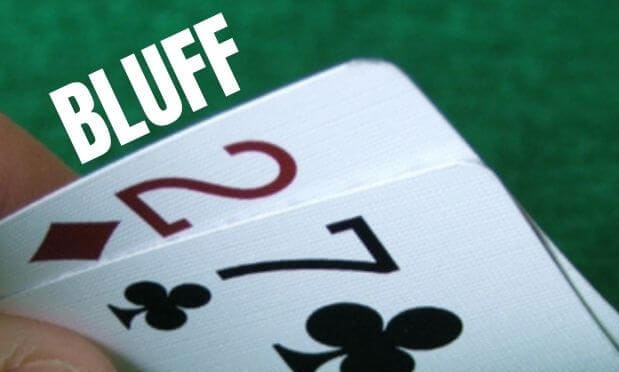
How to Bluff Poker
When it comes to playing poker, there are many different techniques to use. One of these techniques is the bluff. You can use this technique in a number of ways, including turning your stab bluff, semi-bluffing, and even instant bet bluffing. Regardless of what type of bluffing technique you use, there are several things to keep in mind when you’re trying to play it correctly.
Instant-bet bluff
When playing poker, one of the most important skills you will need to learn is how to bluff. Bluffing allows you to win pots, even when you are not getting the cards you want.
There are two kinds of bluffs. Stone cold bluffs and mediocre bluffs. The difference is in how the bluff was called. For example, if a player called a mediocre bluff, they might have been thinking about the hand for a while.
A bluff is often called by a good player who is willing to call a range of hands. They will do this to keep opponents from pushing forward.
When you bluff, you are trying to make other players believe that your hand is strong, when in reality it is not. This allows you to extract value when an opponent overplays.
Turn stab bluff
When it comes to poker you aren’t going to win a bet for long if you don’t play with a solid plan of action. The most important component of any winning plan is your psyche, and you’ll be more apt to do what you should if you’ve got a partner in crime. It’s the most fun to have a partner in crime that you’ll remember the rest of your life. So how do you make the most of that special someone’s hand? The answer is a bit of strategic planning and a hefty dose of luck. That is the best way to have a fun poker night, and a fun time doing it.
Semi-bluff
Semi-bluffing is a poker strategy where players try to get their opponents to fold. When done correctly, it can be a very effective and powerful tool. However, semi-bluffing is not for everyone. It is a skill that needs to be learned.
Typically, semi-bluffing involves betting with a draw that has the potential to develop into the best hand. There are many different types of draws. The key is to determine the right draw for the situation.
The best type of draw to use for bluffing is an open-ended straight draw. This type of draw has six outs to improve. For a semi-bluff to work, the opponent’s hand must be very weak.
A flush draw is another good draw for a semi-bluff. In a normal flush, there are eight or nine outs to improve. On a flush draw, a player’s hand may be quite strong.
Optimal bluffing frequencies
There are many different factors that go into deciding when to bluff, how often to bluff and how to bluff effectively. One of the most important is a player’s bluffing skill. It is important to bluff the right amount, with the right frequency and at the right time. Here are some tips to help you find out how to bluff effectively and earn more money.
Firstly, the bluffing ratio you want to use depends on the size of the bet you want to make. A high bet allows you to bluff more. On the other hand, a low bet will not allow you to bluff as often.
Another consideration when determining the best bluffing frequency is the type of opponent you are playing against. A tight, aggressive player will be more likely to pick up on your bluffs than a passive, laggy opponent.
Bluffing from less experienced players
Bluffing from less experienced players in poker is not always easy. Often, they tend to be a bit too aggressive, and this may result in you losing a lot of chips. However, if you understand how to bluff at the right time, you can still get your opponents to fold.
Bluffing is important to poker players, because it enables them to gain more chips by taking advantage of bluffing opportunities. Whether you are playing in a multi-table tournament or in a cash game, the key is to learn to read bluffs. The more you know about a particular player, the better you can assess their strength and take advantage of the bluffing opportunities.
One of the easiest ways to tell if an opponent is bluffing is to watch their body language. They might touch their face or look uncomfortable, which is a signal that they aren’t sure of their hand.